Stary Rynek, Odwach
Old Market Square, Odwach
© www.fotomarburg.de Bildarchiv Foto Marburg
POL
near Poznań
Fetching images...
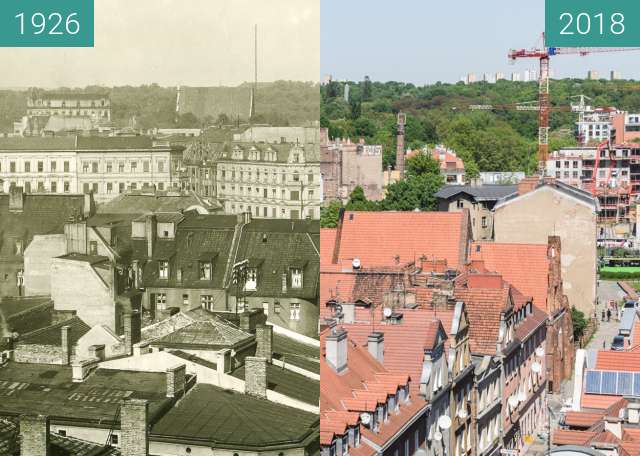

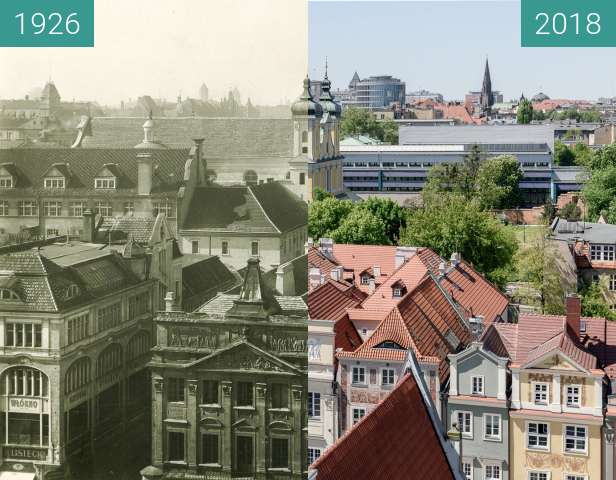
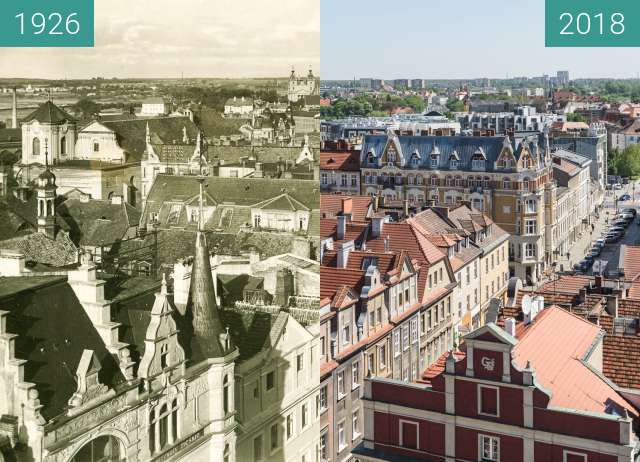
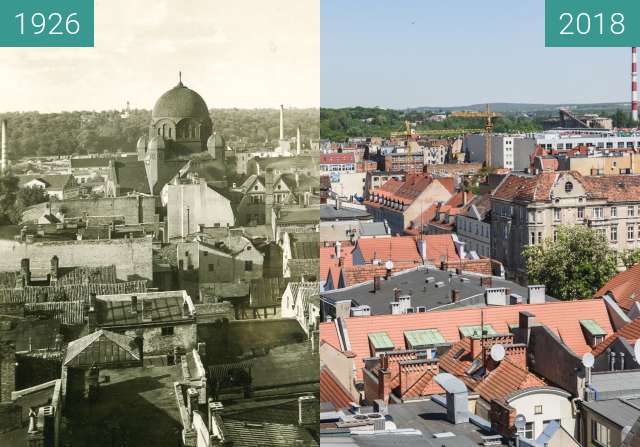
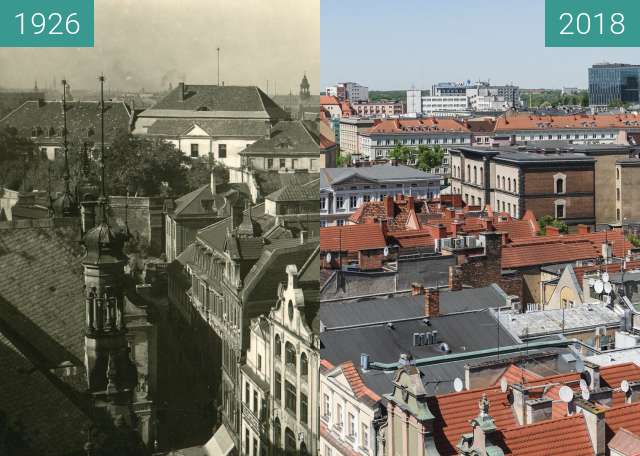
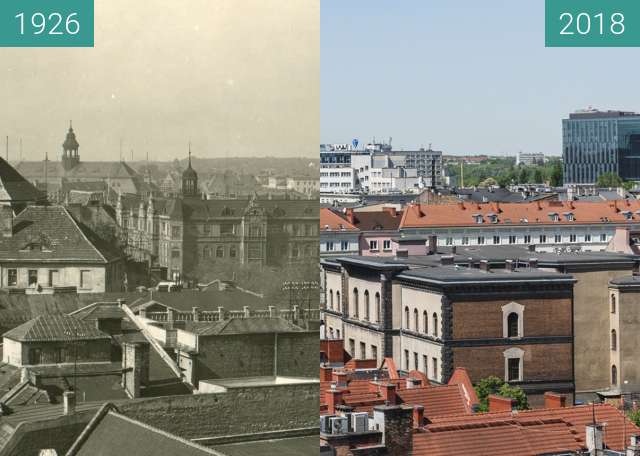
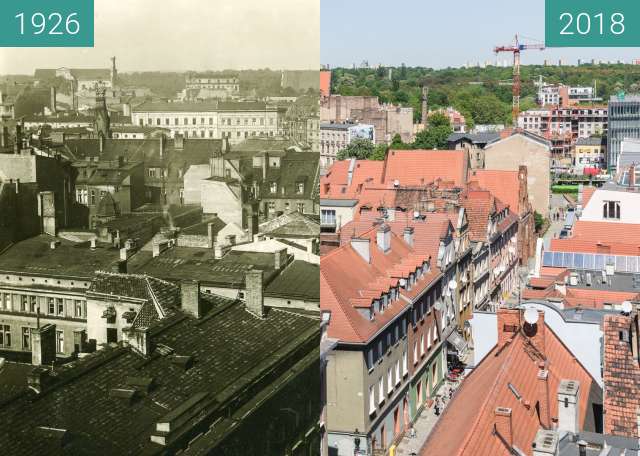
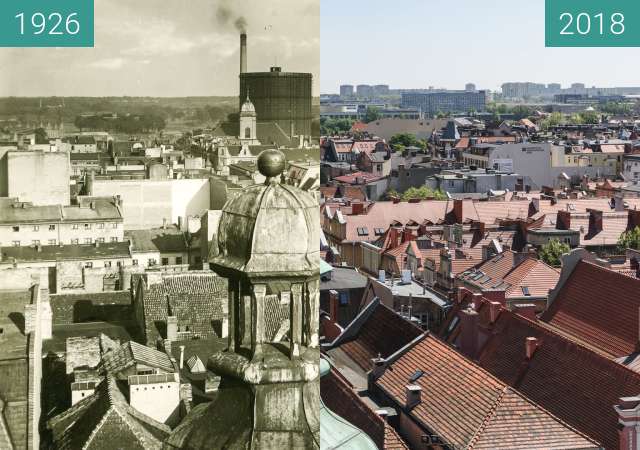
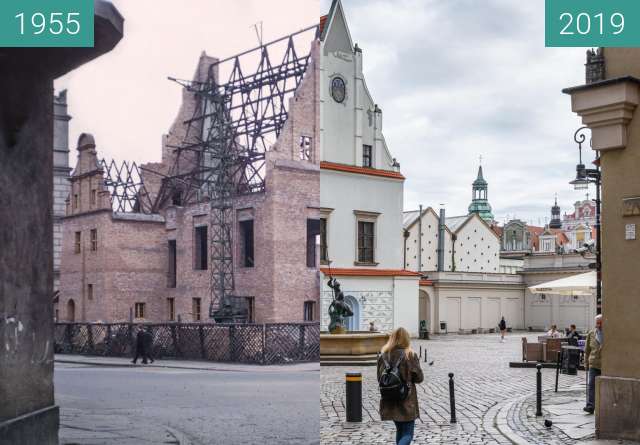
Na pierwszym planie budynek odwachu na Starym Rynku. Powstał w XVIII w. Pierwszy drewniany budynek zastąpiono nowym, zbudowanym w latach 1783-1787 według projektu warszawskiego architekta Jana Chrystiana Kamsetzera, w stylu klasycystycznym. Budowę sfinansował starosta generalny Wielkopolski – Kazimierz Raczyński. Służył jako siedziba dla straży miejskiej, a później policji.
W okresie międzywojennym w Odwachu umieszczono areszt garnizonowy. Poważnie uszkodzony podczas walk w 1945 r., został odbudowany w latach 1949-1951. W 1961 roku stał się wtedy siedzibą Muzeum Ruchu Robotniczego im. Marcina Kasprzaka. Obecnie mieści się w nim Muzeum Powstania Wielkopolskiego 1918–1919 będące oddziałem Wielkopolskiego Muzeum Walk Niepodległościowych.
W elewacji frontowej widać ganek ograniczony z obu boków ryzalitami. Cztery kolumny wykonane w porządku toskańskim wspierają architraw, na którym widnieje fryz z tryglifami. Na attyce kartusze: Na środku z herbem Rzeczypospolitej z czasów Stanisława Augusta Poniatowskiego, po lewej z herbem Raczyńskich – Nałęcz, po prawej z herbem Poznania.
W tle Ratusz (ok. 1300).
Po lewej, nieodbudowany po wojnie, Nowy Ratusz (1892).
Źródła:
https://pl.wikipedia.org/wiki/Odwach_w_Poznaniu
https://pl.wikipedia.org/wiki/Ratusz_w_Poznaniu
https://pl.wikipedia.org/wiki/Nowy_Ratusz_w_Poznaniu
In the foreground, the building of the vault in the Old Market Square. It was built in the 18th century. The first wooden building was replaced with a new one, built in 1783-1787 according to the design of the Warsaw architect Jan Chrystian Kamsetzer, in the classical style. The construction was financed by the staroste of Greater Poland - Kazimierz Raczyński. He served as a seat for the city guard and later the police.
In the interwar period, a garrison prison was placed in Odwach. Severely damaged during the fighting in 1945, it was rebuilt in 1949-1951. In 1961, it became the seat of the Museum of the Workers' Movement named after Marcin Kasprzak. Currently, it houses the Museum of the Wielkopolska Uprising of 1918-1919, which is a branch of the Wielkopolska Museum of Independence Battles.
In the front elevation you can see a porch bounded with both sides with breaks. Four columns made in the Tuscan order support architraves with a frieze of triglyphs. On the attic cartouches: In the middle with the coat of arms of the Republic of Poland from the time of Stanisław August Poniatowski, on the left with the Raczyński coat of arms - Nałęcz, on the right with the coat of arms of Poznań.
In the background the Town Hall (around 1300).
On the left, not rebuilt after the war, New Town Hall (1892).
Sources:
https://pl.wikipedia.org/wiki/Odwach_w_Poznaniu
https://pl.wikipedia.org/wiki/Ratusz_w_Poznaniu
https://pl.wikipedia.org/wiki/Nowy_Ratusz_w_Poznaniu